Intel Unveils Lunar Lake Architecture: New P and E cores, Xe2-LPG Graphics, New NPU 4 Brings More AI Performance
by Gavin Bonshor on June 3, 2024 11:00 PM ESTBetter I/O: Thunderbolt 4, Thunderbolt Share, Wi-Fi 7 Included
Intel's developments in I/O and connectivity bring the current generation of connectivity to the Lunar Lake platform. Key highlights in terms of I/O, which is set for Lunar Lake, include native Thunderbolt 4 connectivity, the new Thunderbolt Share functionality, and the upgrade to Wi-Fi 7 wireless connectivity.
Thunderbolt 4 builds excellently on the foundation laid by Thunderbolt 3, which isn't new from a controller standpoint. It does offer enhancements in connectivity and bandwidth, and being internally opted for is the key difference here. Three Thunderbolt ports are now allowed for every laptop, making this feature very flexible and usable.
Thunderbolt Share is a new technology that will come with Lunar Lake. It allows multiple PCs to share screens, monitors, keyboards, mice, and storage across systems in a straightforward and fast manner at up to 60 frames per second. This is very important in collaborative environments, whereby sharing data is made easy and quick, thus improving workflow. When used in productivity tasks, the utility allows users to sync folders and has a drag-and-drop file-sharing function between PCs at high speeds.
Wi-Fi 7 is also integrated into the Lunar Lake platform, which Meteor Lake omitted regarding wireless connectivity. This multi-link operation feature of Wi-Fi 7 adds wireless signal integrity and reliability and increases throughput with less latency by duplicating packets across all links above. This implies smoother performance and better load balancing, even in demanding applications. The greatest benefit from Wi-Fi 7's new capabilities comes to the user when dealing with bandwidth-intensive tasks.
It also includes RF Interference Mitigation technology, where the DDR clock frequency is automatically tuned to minimize interference with Wi-Fi signals. This function saves 50% of throughput degradation caused by memory noise; thus, theoretically, it should uplift the performance of the entire wireless network. Another positive effect users can expect is robust connectivity, even in very demanding environments.
Intel's partnership with Meta goes further, tapping into this Wi-Fi 7 technology to enhance VR experiences. This further optimizes the video latency performance and reduces interference, thus making VR applications more seamless and engaging, at least from a wireless connectivity viewpoint. The new enhancements of Wi-Fi 7 offer high, reliable speed with low latency to meet the most challenging needs in VR applications.


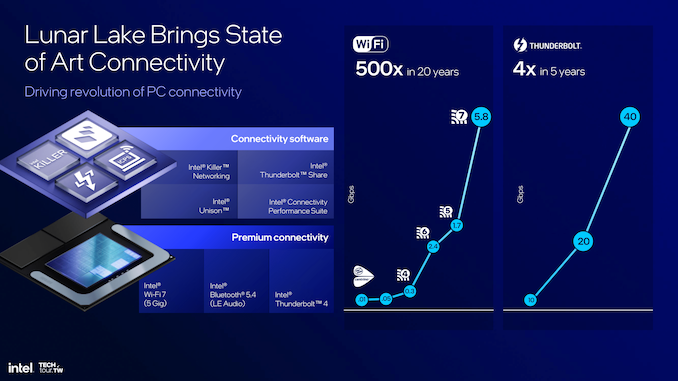
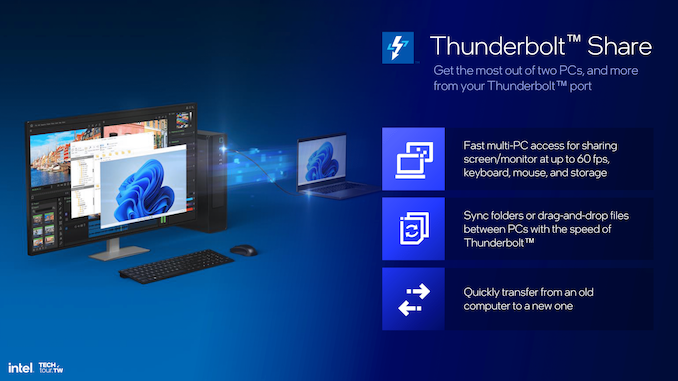
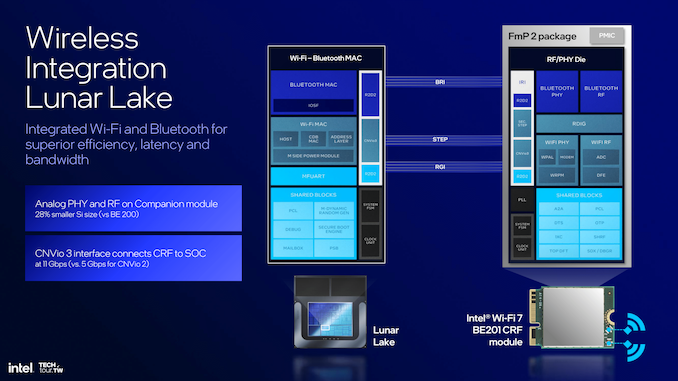
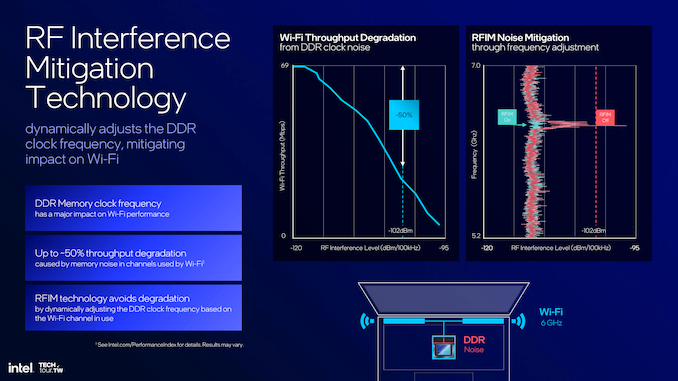
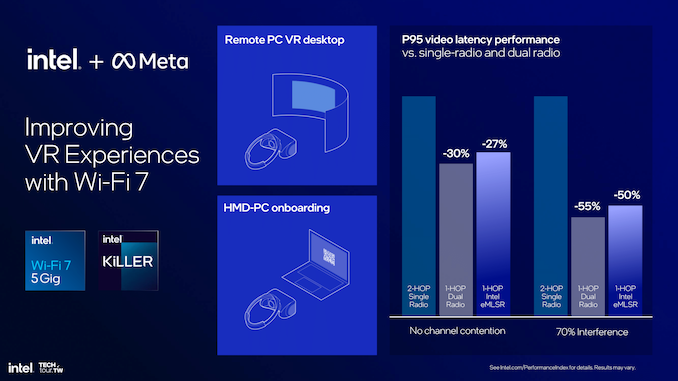








90 Comments
View All Comments
mode_13h - Thursday, June 6, 2024 - link
The way I see it, the only defense Intel has for comparing Skymont to the LP Crestmont cores is to defend their decision not to include a separate LP version of Skymont, in Lunar Lake.In fact, I'll bet what happened is that someone internally made this pitch and the marketing goon who produced the public-facing slides for Lunar Lake opted to reuse that data, since it made Skymont look even better (it's already quite impressive)! Reply
kwohlt - Tuesday, June 4, 2024 - link
The MTL E cores shared a ringbus with the P cores. The LNL E cores are completely separated from the P cores and function much more similarly to current LP-E cores Replyname99 - Wednesday, June 5, 2024 - link
So how much faster are they than the MTL E-cores (as opposed to the LP-E cores)?Sure it's nice that the dumbness of MTL is fixed, but the question is the one I'm interested in. Reply
mode_13h - Tuesday, June 4, 2024 - link
So is L0D just a new name for what they previously called L1D? The two seem virtually identical, at least in terms of the information they disclosed. Replymode_13h - Tuesday, June 4, 2024 - link
The thing they're *now* calling L1D is what seems to be the new part. ReplyDante Verizon - Tuesday, June 4, 2024 - link
AMD will be swimming ahead, how pathetic. Replylmcd - Monday, June 17, 2024 - link
AMD doesn't build a package that competes with this product. If Intel delivers with Xe2 (and there's no reason to believe they will, to be clear), this product would win the entire handheld gaming category for the generation in about 30 seconds flat. Lunar Lake wouldn't actually be impossible to stuff into a phablet-style phone, though it obviously wouldn't be easy. Replykkilobyte - Tuesday, June 4, 2024 - link
what about the i9-14900KS test redo with Intel Default settings? You told us 20 days ago that you'd redo them :Gavin Bonshor - Friday, May 10, 2024 - link
Don't worry; I will be testing Intel Default settings, too. I'm testing over the weekend and adding them in.
So, will this promise be ever fullfilled? Reply
kn00tcn - Tuesday, June 4, 2024 - link
are you confirming that he chart images have not changed or were you waiting for an announcement? Replykkilobyte - Tuesday, June 4, 2024 - link
Unless I'm mistaken, the charts don't seem to have changed, and include only a single set of data (without the Intel Default Settings). The text doesn't suggest they were, though I didn't read the whole article again, I admit. Reply